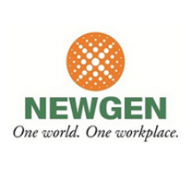

Newgen OmniFlow and OpenText Process Automation compete in the business process management realm. Newgen OmniFlow excels in pricing and support satisfaction, while OpenText Process Automation is notable for its robust features and comprehensive capabilities despite higher costs.
Features: Newgen OmniFlow includes adaptive case management, robotic process automation, and seamless integration options. OpenText Process Automation offers advanced analytics, AI-driven insights, and extensive workflow customization, making it appealing to enterprises requiring advanced functionality.
Room for Improvement: Newgen OmniFlow could enhance its analytics capabilities, broaden its AI features, and offer more advanced customization tools. OpenText Process Automation might improve deployment simplicity, decrease resource requirements for setup, and offer more budget-friendly solutions.
Ease of Deployment and Customer Service: Newgen OmniFlow is praised for straightforward deployment and strong customer support, ensuring a smooth transition. OpenText Process Automation has a more complex deployment requiring more resources, and its customer service, although comprehensive, demands greater interaction.
Pricing and ROI: Newgen OmniFlow generally has a lower setup cost, offering quicker ROI through reduced time and investment. OpenText Process Automation requires higher initial costs with a slower ROI but compensates with extensive long-term capabilities, making it suitable for those investing in advanced features over time.
| Product | Market Share (%) |
|---|---|
| OpenText Process Automation | 0.7% |
| Newgen OmniFlow | 0.7% |
| Other | 98.6% |

| Company Size | Count |
|---|---|
| Small Business | 2 |
| Large Enterprise | 6 |
| Company Size | Count |
|---|---|
| Small Business | 7 |
| Large Enterprise | 3 |
OpenText Process Automation offers a low-code environment for efficient development, enhanced by strong integration, dynamic case management, and OCR technology to streamline business processes across industries.
OpenText Process Automation provides a comprehensive platform for improving business processes with features that allow for significant time reduction through a low-code development environment. It integrates seamlessly with third-party systems, enabling dynamic case management and effective monitoring capabilities. By incorporating OCR technology, it enhances efficiency and lowers costs. Users benefit from its centralized architecture, which brings together diverse tools to streamline operations. Its BPM modules support automation in supply chain and vendor processes, leading to widespread implementation. Known for its stability and scalability, it also receives positive feedback for its reliable support. However, there are areas needing enhancement, such as improved low-code features, better integration, and a desire for a unified UI with better mobile compatibility. There is a call for an archival function to address database growth and concerns about pricing and performance related to the BPMN 2.0 model. Potential improvements include AI integration and enhanced modeling in the low-code platform.
What are the key features?OpenText Process Automation is implemented in industries like insurance, banking, and manufacturing for tasks such as invoice processing, accounts payable, cash management, and supply chain automation. It enables integration with systems like SAP and Salesforce, offering on-premises or cloud deployment, enhancing workflows and document orchestration.
We monitor all Business Process Management (BPM) reviews to prevent fraudulent reviews and keep review quality high. We do not post reviews by company employees or direct competitors. We validate each review for authenticity via cross-reference with LinkedIn, and personal follow-up with the reviewer when necessary.